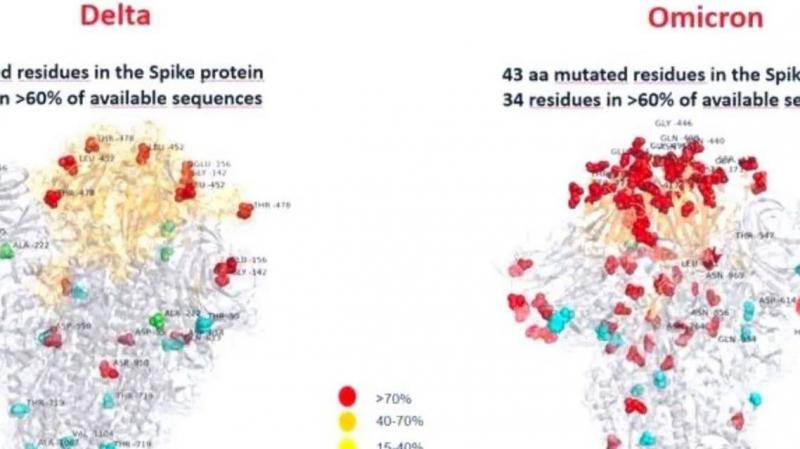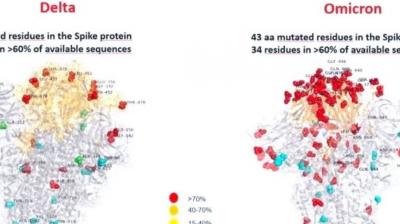Global news regarding the new coronavirus variant "Omicron" continues to generate panic. The World Health Organization has declared that the threat it poses is "extremely high," based on early evidence suggesting it could lead to sudden mutations accompanied by "severe consequences." The first images of this new heavy guest confirmed these reports.
The initial images of the "Omicron" variant showed mutations exceeding those found in the "Delta" variant, which was the most dangerous variant of the virus until recently. The three-dimensional images released by the Bambino Gesù Hospital in the Italian capital, Rome, illustrated numerous red points densely scattered at the top of the new variant. In contrast, these points were considerably fewer in Delta, with mutations concentrated in the "spike protein" region, which allows the virus to attach to and enter human cells.
Researchers overseeing the study revealed a criterion indicating that regions with mutation percentages exceeding 70% are marked in red, representing the highest percentage. They announced that they found more mutations in the "Omicron" variant compared to the Delta variant, focusing on a single area of the protein that interacts with human cells.
The location of these mutations is concerning. However, they noted that these differences do not necessarily mean that this variant is more dangerous; rather, it indicates that the virus has adapted more effectively to humans by generating a new variant. Epidemiology professor at Deakin University, Catherine Bennett, remarked that the new variant is striking not only for the number of mutations it contains but also for their location, clarifying that the new variant has a limited number of significant mutations.
The World Health Organization raised alarm bells, with researchers believing that the key mutations in the variant increase its transmissibility among humans. On Tuesday, the WHO announced that the threat posed by the new Omicron variant of the coronavirus is extremely high based on early evidence, which may lead to sudden mutations accompanied by "severe consequences."
In a technical note addressed to member states, the UN health agency stated that "there is considerable uncertainty" surrounding the new variant first discovered in South Africa. The note also described the possibility of the Omicron variant spreading more widely around the world as "high." It is noted that this variant is now spreading in several countries, from Africa to the Pacific, including Canada, Italy, Germany, the United Kingdom, the Netherlands, and others.




